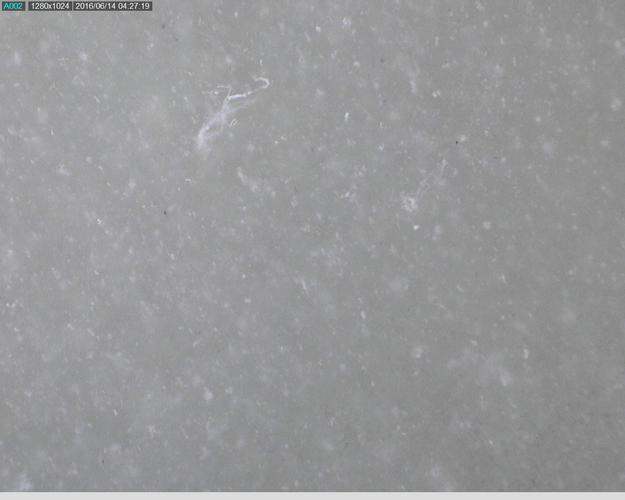Results 1 to 10 of 99
Thread: Ebay Gamble
Hybrid View
-
06-03-2016, 01:34 AM #1< Banned User >


- Join Date
- Jul 2015
- Location
- Central Oregon
- Posts
- 789
Thanked: 98
I have thought that using slurries of the right Grit at the right time in the progression can and will speed things up a bit and get to finish faster, it should work with about any hard hone, Arkansas or not.
The slurry self education is forever interesting to me at this point.
-
06-03-2016, 01:40 AM #2
-
06-03-2016, 01:51 AM #3Senior Member



- Join Date
- Dec 2014
- Location
- Virginia, USA
- Posts
- 2,224
Thanked: 481
It's a slightly different technique than working with a Thuringian/Escher/Coticule. With those 3, you take a piece of the same type of stone and work up a slurry from the parent material. With a hard stone like a PHIG or Arkansas, what you're doing is more akin to Jnat slurry where you take a Nagura stone that is softer than the base stone and create a mud from the nagura stone to do low grit cutting and mid range polishing. Then when it's time you'll finish with just water on the actual hone. Kind of like throwing SIC grit on top of ceramic plate for lapping hard stones. The SIC does the cutting, the ceramic just provides a hard flat surface (and hopefully doesn't dish too bad before your hone is flat). It's actually preferable that the base stone doesn't break up/slurry itself.
-
06-03-2016, 01:55 AM #4

The the stones you mention will work good as a slurry because the slurry comes from those stones. It is the quartz that is in the mud of the Escher that does the honing for you.
-
06-03-2016, 02:02 AM #5

Mother nature took 350 million years to produce your Arkie and she did it well. It is 99% silica there is nothing better. But It is a different animal. I keep reading people wanting to burnish the Arkie that is a bad idea. I the old days oil was use to keep the arkie from loading up. Let me repeat that one "loading up the stone" There is no such thing as burnishing an arkie . If you use a chisel or and ax on it until it is smooth you only "loaded the stone" This is like buying mud grips for a 4x4 truck and then cutting the tread off the tires and wondering why it goes trough the mud slow or not at all. It is a myth burnishing the Arkansas .
-
06-03-2016, 08:52 AM #6

Oil is used rather than water because oil fills any voids in the rocks surface and makes a rough stone appear smoother to the edge. In effect it floats the edge better.
Loading the stone is different to burnishing.
A loaded stone is full of swarf and old oil, The surface of the hone is dirty, and while the dirt may make the hone act smoother the finish is softer, and not the stone.
Burnishing is the breaking down of the grit on the stone, You are physically grinding the grit, grinding off the high spots and making the actual rock one continuous high polish surface. The finish is much harder, And because the rock itself has filled most of the voids water can be used rather than oil. It's not common with stones because in order to burnish a stone the correct binder and grit conditions need to be present. The rock needs to be hard, the grit needs to be hard, and the binder needs to be holding everything solidly so no grit comes loose at all when honing. When all those 3 happen you can take a rock that is 1000 grit and polish it. It's this polish we refer to a burnish. And the finish from such a stone is what level of polish you can impart. A burnished stone can be cleaned fully, and will have no dirt on it, whist still been polished.
Softer arks do shed grit, and this is why soft arks are never burnished because the grit been lost means it's a fruitless task to even attempt to burnish them.
To say burnishing is a myth is frankly wrong, there is photographic proof of burnishing, and most people who have a finishing ark have at some point burnished one. For anything other than a razor however the burnish would be undesirable. Knives do not benefit from a 10k+ edge, or the massive speed drop from trying to use a burnished stone. Knives however are not razors.
When you add a slurry to a burnished ark you move the goal posts. In effect it is like the ark becomes a flat and neutral stone. Doing an absolute minimum to the edge, allowing the slurry to be the only abrasive. In this instance any neutral stone could be used, since the hone is only providing a base for the slurry to function on. The advantage of an ark is it's harder than just about any other hone sized object, It comes in the correct dimensions, The face is already geared to finish, and in a lot of cases any slurry you apply to the hone will not significantly alter the polish you have spent time creating on the ark. Also because it is a hone the base will not have any detrimental effect on an edge, Softer glass, or harder base rocks may have a detrimental effect. I have a neutral diorite that will also work in the same way.
Coticule slurry is a prime candidate because coticule binder is often soft. When you have a soft coticule it doesn't matter how small the garnet abrasive is as more abrasive will be released every swipe of the blade. Using a neutral rock instead of base coticule allows you to control the abrasive, And will let a fast non finishing coticule to potentially work as a finisher. This is really useful as only the hardest slowest coticules will act as a high end finisher, and you can go through many to look for that perfect finisher. This system allows you to take a selection of rubbing stones that are far cheaper, or a full stone that isn't quite a finisher and potentially get the last bit from the abrasive. Thuri slurries are not really needed as thuri stones do not suffer in the same way with massive abrasive release.Last edited by Iceni; 06-03-2016 at 09:18 AM.
Real name, Blake
-
06-03-2016, 04:08 PM #7

I have to disagree there is no burnished Arkansas it is just a dirty stone with all the pores clogged up. This is called a loaded stone. In the old days oil kept the pores clean. I don't use it my self the kitchen keeps my stones clean, but if you choose the use of honing oil or water with your Arkansas stone it will help keep your stone free of shavings that can clog the pores of the stone and make it less effective.
Last edited by AlienEdge; 06-03-2016 at 04:17 PM.
-
06-03-2016, 04:39 PM #8

If this is an experiment with slurry okay. I don't see the reasoning for it . Why not just use a slurry stone if you like slurry? Why drive a nail with a crescent wrench when you have a hammer laying there?
 I am for the experiment though I like to hear what people have learned on here.
I am for the experiment though I like to hear what people have learned on here.
-
06-16-2016, 02:47 PM #9Senior Member


- Join Date
- Jul 2011
- Posts
- 2,110
Thanked: 459
This isn't true. The novaculite is about the same hardness as iron carbides, maybe slightly softer. The new stones often have mill marks on them, and since the stone matrix is all the same material, if that exposes a large sharp edge, the stones cut faster and more coarsely than a single particle. A medium oil will not allow anything but a crystolon stone to load (and even then, not much - flush with oil and the loading comes out).
The break-in of a new stone either makes the mill marks smaller or dulls their blunt edges (people progressively sanding to a very fine finish will remove them entirely). It's necessary only to blunt them.
If a newbie bought a new "trans black" from naturalwhetstone, they'd find it cutting at first as fast as a washita stone.
Older stones are always broken in, and stones well used are broken in. Finishing a razor on a brand new ark stone that was cut with a diamond saw and then lapped with coarse silica on a rotary lap or something else isn't a great idea.
-
06-17-2016, 03:21 AM #10

I don't know where you might have gotten your stones that were cut so poorly, but my stones came flat , smooth, and ready to use. Get this! They also have 90% sharp corners
 this helped my eyes determine that they were cut well and flat. I didn't put those cuts on my stones either. Look at your new stone , feel of it , if there is no apparent damage or chips use it . Use a soft arkie for your course stone work and the black and trans for finer work. I am putting a couple of pictures of a translucent stone I use with my straight razors . I have never chiseled or axed the stone in any way. I used a straight razor on this stone. I bet you could hone a thousand straight razors on this stone and not ever remove enough of the stone to easily measure. Also please take my word for it they are smooth, and to think this stone or the others stones I own every needed anything done to them is for me laughable. One picture has no magnification the other is 220x .
this helped my eyes determine that they were cut well and flat. I didn't put those cuts on my stones either. Look at your new stone , feel of it , if there is no apparent damage or chips use it . Use a soft arkie for your course stone work and the black and trans for finer work. I am putting a couple of pictures of a translucent stone I use with my straight razors . I have never chiseled or axed the stone in any way. I used a straight razor on this stone. I bet you could hone a thousand straight razors on this stone and not ever remove enough of the stone to easily measure. Also please take my word for it they are smooth, and to think this stone or the others stones I own every needed anything done to them is for me laughable. One picture has no magnification the other is 220x .




 65Likes
65Likes LinkBack URL
LinkBack URL About LinkBacks
About LinkBacks






 Reply With Quote
Reply With Quote
